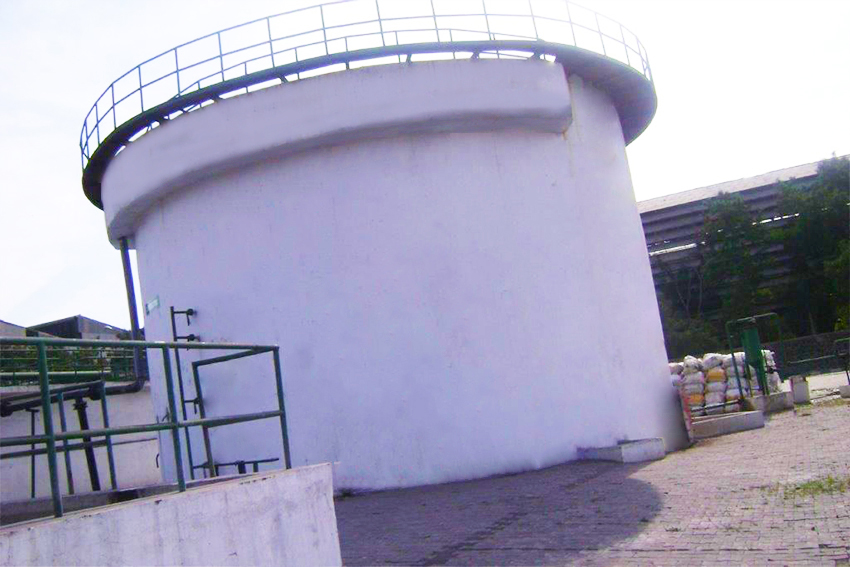Introduction
Anaerobic Reactors are a highly efficient and sustainable solution for treating high-strength industrial wastewater. By utilizing anaerobic microorganisms to break down organic pollutants in the absence of oxygen, anaerobic treatment systems generate biogas as a valuable by-product. At SDES, we specialize in the design, manufacturing, and maintenance of Anaerobic Reactors customized to meet the needs of industries such as food processing, distilleries, breweries, and chemical manufacturing.
What Are Anaerobic Reactors
Anaerobic Reactors are biological treatment systems that break down organic matter in wastewater without oxygen. Specialized bacteria convert organic pollutants into methane (biogas) and carbon dioxide through a series of biological reactions. Anaerobic treatment is ideal for wastewater with high BOD and COD concentrations, making it popular among industries with organic-rich effluent.
Types of Anaerobic Reactors
At SDES, we offer different types of Anaerobic Wastewater Treatment Systems based on the specific requirements of each project:
1. Upflow Anaerobic Sludge Blanket (UASB) Reactor
- Widely used for industrial and municipal wastewater.
- Features upward-flowing wastewater through a sludge blanket where microorganisms digest organic matter.
- Produces significant quantities of biogas.
2. Anaerobic Fixed Film Reactor
- Wastewater flows over media packed with anaerobic bacteria.
- Excellent for treating low to medium-strength wastewater.
- Stable and resistant to shock loads.
3. Anaerobic Contact Reactor
- Combines anaerobic digestion with biomass recycling.
- High treatment efficiency in a compact footprint.
- Ideal for breweries and distilleries.
4. Anaerobic Membrane Bioreactor (AnMBR)
- Combines anaerobic treatment with membrane filtration.
- Produces high-quality treated effluent.
- Useful for zero liquid discharge (ZLD) applications.
Key Components of a SAFF System
- Fixed media:Special plastic media with high surface area for microbial growth.
- Diffused aeration system:Ensures uniform oxygen distribution.
- Blowers:Provide the necessary air for biological reactions.
- Clarifiers: Separate biomass from treated water.
- Pumps and piping:For continuous flow management.
How Do Anaerobic Reactors Work?
The process inside an Anaerobic Reactor consists of four biological stages:
- Hydrolysis:Breaking down complex organic compounds into simpler molecules.
- Acidogenesis:Conversion of simple molecules into volatile fatty acids
- Acetogenesis: Further breakdown into acetic acid, carbon dioxide, and hydrogen.
- Methanogenesis: Formation of methane and carbon dioxide by methanogenic bacteria.
The end product, biogas, can be collected and utilized for energy generation, offering industries an opportunity to reduce operational costs.
Benefits of Using Anaerobic Reactors
- Energy Recovery:Biogas produced can be used as a renewable energy source.
- Lower Operating Costs:Minimal energy input compared to aerobic systems.
- Reduced Sludge Production: Lesser sludge generation reduces disposal costs.
- High Organic Load Handling: Suitable for treating wastewater with high BOD and COD levels
- Eco-Friendly: Helps industries meet stringent environmental regulations and sustainability goals.
Industries That Benefit from Anaerobic Treatment
- Distilleries
- Food and Beverage Processing
- Pulp and Paper Mills
- Pharmaceutical Manufacturing
- Chemical and Petrochemical Industries
- Dairy Industries

SDES: Your Partner for Anaerobic Reactor Solutions
At SDES, we provide complete solutions for Anaerobic Wastewater Treatment, including:
- Feasibility studies and wastewater characterization
- Custom design and engineering of reactors
- Biogas handling and utilization systems
- Installation, commissioning, and training
- Operation & Maintenance (O&M) support
Our expertise ensures high performance, reliability, and long-term benefits for our clients' industrial wastewater management needs.
Internal Links
- Effluent Treatment Plant (ETP)
- Sewage Treatment Plant (STP)
- Operation & Maintenance Services
- Multiple Effect Evaporators for ZLD Solutions
Conclusion
Anaerobic Reactors offer a smart, eco-friendly, and cost-effective method for treating high-strength wastewater while recovering energy through biogas generation. Industries seeking sustainable growth must invest in efficient anaerobic treatment technologies to reduce environmental impact and operational costs.
At SDES, we design and deliver cutting-edge Anaerobic Wastewater Treatment Systems tailored to meet your specific needs. Trust us to help you achieve both environmental compliance and operational excellence.
➡️ Looking for a reliable Anaerobic Reactor system? Contact SDES today for expert consultation!